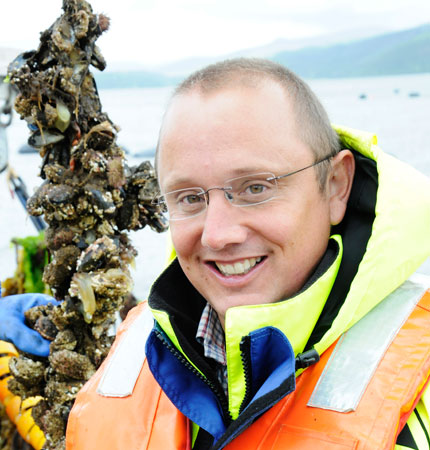Sustainable New Ingredients for Promoting Health
Omega-3 (n-3) long-chain polyunsaturated fatty acids (LC-PUFA), eicosapentaenoic (EPA) and docosahexaenoic (DHA) acids are essential dietary nutrients with key roles in neural development, immune and inflammatory responses, and beneficial effects in several pathological conditions, including cardiovascular and neurological diseases, and some cancers.
Many national and international bodies recommend a daily intake of up to 500 mg of n-3 LC-PUFA for optimum health. It is known that in countries with low economic status the availability of n-3 LC-PUFA in the food supply is low and often below the minimum recommended intake.
It is now appreciated that improvement of human nutrition in terms of fatty acid composition is an important goal and so the primary objective of the project is to address this nutritional deficiency in poor populations in India, Kenya and Tanzania.
Almost all n-3 LC-PUFA is produced by microalgae in marine and freshwater ecosystems and thus fish are the predominant source of these nutrients in the human diet with farmed fish now accounting for around 50% of consumption.
The only sources of n-3 LCPUFA for feeds for farmed fish are, however, fishmeal and fish oil. These are finite and limited resources derived from wild fisheries. Projecting recommended dietary intakes for n-3 LCPUFA to a population of seven billion shows a large gap between supply from fish/seafood (whether wild or farmed) and demand. Therefore, supply of n-3 LC-PUFA for optimal human nutrition is a global problem that transcends geographical and political boundaries.
Conventional plant proteins and vegetable oils do not contain n-3 LC-PUFA but their precursor, linolenic acid (ALA), can be abundant in terrestrial and freshwater plants. In addition, many freshwater fish species including common carp and Nile tilapia have the metabolic capacity to convert dietary ALA to EPA and DHA. Therefore, one option for increasing the amount of n-3 LC-PUFA available to human populations is to exploit the endogenous ability of freshwater fish species to produce EPA and DHA from ALA.
Fish farming in India and Africa is dominated by carp and tilapia production - the species of greatest interest for the production of n-3 LC-PUFA in farmed fish. Intensification of carp and tilapia aquaculture with associated increased use of supplementary and manufactured feeds provides the opportunity to enhance nutritional quality of the farmed products through higher n-3 LC-PUFA contents derived from dietary ALA. This must be done sustainably and thus without the use of finite and/or expensive global commodities or competing with existing human food resources or animal feedstuffs represented by current agricultural crops.
The aim of this project is to improve n-3 LC-PUFA and antioxidant status of farmed carp and tilapia in India, Kenya and Tanzania for the benefit of poor local populations using indigenous, non-conventional feed ingredients. This project applies and expands current knowledge of nutrient and fatty acid compositions of a range of local, indigenous materials including freshwater plants, microbes and seaweeds and assess their availability, feasibility and potential as feed ingredients in terms of nutritional quality, supply level, and socio-economic viability.
Selected novel ingredients are being tested in carp and tilapia feeding studies for their ability to support growth, development and health of farmed fish and to enhance nutritional quality through increased the n-3 LC-PUFA content. The potential of these novel feed ingredients for further widespread application and industrial and commercial scale-up is also being assessed in order to facilitate their exploitation as novel indigenous feed ingredients.

